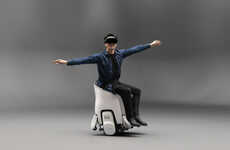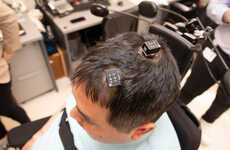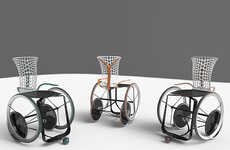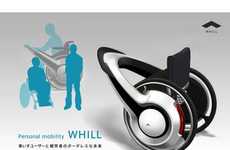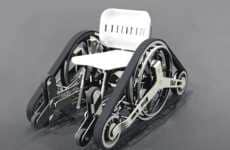
Milan Lab Creates Transport Controlled by Brain Signals
Geebee Micro — March 7, 2009 — Art & Design
References: physorg
With a skullcap on his head connected to a computer and electrodes, Bernardo Dal Seno moved around in a wheelchair using only his mind, claimed researchers from Italy.
According to the researchers, the wheelchair will respond to signals sent from the brain and move to rooms based on the programming.
To operate the wheelchair, its occupant concentrates on a specific room they want to go to on a screen; the wheelchair then travels to the focused-upon destination.
Professor Matteo Matteucci said that the technology is not based on reading minds but on reading a “brain signal.”
At this time, the chair should only cost about 10% more than a typical electric wheelchair.
According to the researchers, the wheelchair will respond to signals sent from the brain and move to rooms based on the programming.
To operate the wheelchair, its occupant concentrates on a specific room they want to go to on a screen; the wheelchair then travels to the focused-upon destination.
Professor Matteo Matteucci said that the technology is not based on reading minds but on reading a “brain signal.”
At this time, the chair should only cost about 10% more than a typical electric wheelchair.
Trend Themes
1. Thought-propelled Wheelchairs - Creating wheelchairs controlled by brain signals presents disruptive innovation opportunities in the healthcare industry for enhancing mobility and independence for individuals with physical disabilities.
2. Brain Signal Technology - The development of brain signal technology opens up disruptive innovation opportunities in various industries, such as healthtech, gaming, and virtual reality, by enabling mind-controlled interactions and devices.
3. Enhanced Accessibility - The advancement of thought-propelled wheelchairs creates disruptive innovation opportunities in the transportation and accessibility industries, allowing for more inclusive and independent mobility solutions.
Industry Implications
1. Healthcare - The healthcare industry can explore disruptive innovation opportunities by incorporating thought-propelled wheelchairs as assistive devices, offering enhanced mobility and independence to patients with physical disabilities.
2. Healthtech - The development of brain signal technology in wheelchairs presents disruptive innovation opportunities in the healthtech industry for creating new applications and solutions that improve the quality of healthcare delivery.
3. Transportation - The transportation industry can leverage thought-propelled wheelchairs as a disruptive innovation opportunity to enhance accessibility and inclusivity, providing individuals with physical disabilities with seamless mobility options.
3
Score
Popularity
Activity
Freshness





